- Home
- Neal Asher
Dark Intelligence Page 16
Dark Intelligence Read online
Page 16
“If you come out of there, Isobel, you’re dead.”
It was Trent, speaking to her through the intercom. Managing to return her thought processes to something approaching humanity, she wondered why he hadn’t tried to pursue her inside. After a moment of consideration she realized the reason was obvious. First, he didn’t want to rush in after something like her; secondly, he knew about the weapons this room contained. Isobel dismissed him from her thoughts. She would leave when she was ready to do so. She might have lost one of her human arms but these manipulators were very precise, and she had so many options. She could find a way to use these weapons, and she was stronger than him, much stronger.
Next, coiling round, Isobel began to cut away her damaged and now numb leg. She decided then she would remove both of them. They were no use to her any more.
SPEAR
Though I disliked the delay, it was necessary for us to make one stopover on our route to Penny Royal’s planetoid. The Puling Child—I had yet to think of a new name for the destroyer—was depleted of weapons and I was on the way to confront a very dangerous AI. It is a simple fact that you don’t go hunting a lion with an empty rifle. It was two weeks’ travel to the stopover, and I spent the time sleeping for six hours then working for twenty, stopping only to tend to human needs. My body didn’t require sleep but I did use it to stabilize my thinking, and with everything that had occurred I felt I needed that.
With plenty of robot assistance and plenty of time, I stripped out the cabins, moved walls and built equipment. Near the end of those two weeks, I had one large workshop and laboratory, containing all the facilities I would need. I had rid myself of the refectory and moved the food synthesizer in there. I enlarged the bridge, lined the walls and ceiling with screen fabric and set a single acceleration chair in the middle of the floor, partially surrounded by a horseshoe console. I found this setup less claustrophobic than the previous arrangement and it gave me a better field of view for dealing with Penny Royal—I wanted all the advantages possible. Upon arrival at our first destination I sat in the chair and turned on the screen fabric. This immediately created the illusion that I was now sitting in that chair on a bridge floor open to vacuum.
The sun here was a glaring blue giant of about fifty solar masses. From my perspective, it looked about ten times the size of Sol as seen from the surface of Earth. Here the lack of air wouldn’t have killed me, had I actually been exposed in open vacuum. This close to the star, with it putting out twenty thousand times the luminosity of Sol, I would’ve been turned to ash in a second.
“Do you have a target for our raw materials?” I asked, impatient to get this done and be on the way to Penny Royal’s planetoid.
In response Flute put a cross-hairs scope circle over to the left of the sun and magnified. I suddenly felt I was rushing towards that point and found myself gripping the arms of my chair. A globular red mass drew into view.
“Fifteen tons of nickel-chrome iron,” Flute explained. “The asteroid is highly refined, having out-gased its impurities while being melted every time at its perihelion. It is currently just below melting point, so little energy will be required to form it.”
While I watched, the image grew larger and larger as we drew closer, then it adjusted back as Flute dropped the magnification. I felt the fusion engine fire up briefly to slow us, then steering thrusters kicked in to position us very close to this mass.
“What about the ship’s cooling mechanisms?” I asked.
“Thermal converters are at full operation,” Flute replied. “I will not need to use refrigeration lasers or plasma expulsion for five hours, which should give me enough time to manufacture forty standard railgun missiles.”
I was about to say “proceed” but Flute wasn’t waiting. Already I could see flat spots appearing on either side of the asteroid as Flute clamped it in hardfields. A moment later a third hardfield began peeling off shavings, which it propelled slowly towards the ship in a neat line. These soon began to glow more intensely as Flute hit them with anti-personnel lasers, before rolling them between further hardfields into neat cylinders, their ends snipped off as if by invisible cigar cutters.
I could have sat there watching the railgun missiles being manufactured for hours, but I needed to do something first. This need pushed me out of my seat and had me heading for my laboratory-cum-workshop. The entire setup here was for one purpose. If I was to confront Penny Royal, I needed more than just this ship and a new stock of weapons. I had to have knowledge of the AI, understanding, intelligence, and two items I had moved here might provide these.
I’d taken a nanoscope, nanofactor and various other items from Isobel’s ship. From these, I’d fashioned a variety of other devices and installed them here on work surfaces around the walls. I’d set up contained computing and hung more nanobot-woven screen fabric across one wall, and even installed a hologram-projector. I’d rigged a couple of ship’s robots for specialized tasks—one now dangled from the ceiling like a multi-fingered grab and one was mounted on a movable pedestal. The latter was ready for the object presently clamped in a frame on the central table. I walked over and studied it.
The Golem torso still had Penny Royal’s discarded spine through its chest. I stepped back, folding my arms, then auged through to take control of the machines in this room. First I brought over the pedestal robot, which opened out its two larger arms and closed heavy serrated clamps on either side of the Golem’s chest. It then readied its smaller arms on the rails down its front, reaching in to close neoprene-faced clamps about the base of the black spine, avoiding the sharp edges, then it slowly pulled. I metered the amount of resistance in my mind, watching it build then release as with a horrible screech the spine came free.
Releasing its larger serrated clamps, the robot backed up to retract the spine fully and there I paused it, stepping over to examine the thing it held. Again I felt that weird connectedness to this piece of Penny Royal, that odd familiarity. And though I didn’t like the feelings I experienced being this close to the thing, I gave it a thorough visual inspection. The damned thing wasn’t damaged at all. Even the point was still so sharp it was difficult to see where it ended and where air began. I stepped back and ordered the robot to consign it to a glass cylinder in the corner of the room, sealing it in and surrounding it with inert gas. I would have to give it a closer examination in the future, if only to find out what the hell it was made of, but right now my main interest was the Golem.
The pentagonal hole punched through the android’s chest was as neat as if it was part of the thing’s manufacture. The only materials that could cut through such ceramal were high-compression nanofactured diamond tool bits, or the slugs for portable railguns used to penetrate prador armour. Penny Royal must have been very busy with what had been state-of-the-art manufacturing, back when it transformed itself from a ship’s crystal AI to a thing like a giant sea urchin. The smaller exit hole in the Golem’s back had five neat petals of ceramal ringing it. Again, they looked so even that they could have been made by a machine. I stepped back, now summoning the robot hanging from the ceiling; it descended like a nightmare chandelier.
First I ran a scan and, as the results loaded to my aug for my inspection, I experienced a cold sweat. The spine had gone in underneath the Golem’s crystal and merely scored grooves in its lower surface. It had also nicked the s-con cable that supplied power to its servo motors, but that should not have been enough to stop it. I just didn’t know why I was still alive. I glanced over at the spine in its glass cylinder, puzzled, suspicious.
Giving the robot further instructions had it dismantling and removing the remains of one of the Golem’s arms. Afterwards it inserted a thin, ribbed worm of a tentacle which terminated in a small claw and an interface plug. This sought out and found the Golem’s sensory feed inside its chest, disconnecting it. We were nearly there, as it next found the main socket for direct uploads and downloads, plugging in and forging connections for both power and the ne
cessary frequencies of coherent light. Then the moment I’d been waiting for, when everything came alive in there. And, ensuring there was no way the Golem could make its own connection and do something like seizing control of my robots, I lastly connected it up to my hologram projector—its projection point set out over the floor.
The air fizzed as a white cylinder as tall as me was projected in the centre of the room. A rainbow rippled from its top to its bottom, then blinked out. After a moment the rainbow traversed the white cylinder again, but now it carved away its whiteness to reveal a sculpture inside. A man-sized Oscar appeared, seemingly fashioned of liquid mercury. It had reverted to an industry projection used in Golem manufacture. This was worrying, because it meant its android source had no conception of its own physical appearance, so might contain no useful data at all. I watched it for a while but it did nothing further, so I decided to prod.
“Hello Daleen,” I said.
The Oscar opened its eyes and they were midnight black, which certainly wasn’t in the industry handbook. Its arms separated from its body, it raised one leg, then as it tried to throw itself at me the projection broke up. It briefly became a fractured morass, the kind of images seen through a nanoscope during nanofacture. After a moment the cylinder went white again, before again revealing the Oscar. I eyed it while running through data gathered directly from the Golem’s mind. I could find no response to language prompts, which made me think this Golem had been completely wiped. However, if it had been wiped, I could see no reason why it would have tried to kill me. Again taking care not to let anything out, I selected a language package from a file on my aug and sent it to the Golem. The response this time was different. Instead of opening its eyes it opened its mouth and screamed before breaking up again.
Two hours later, after numerous screams and attempts at attacking me, I finally felt I was getting somewhere. It opened its eyes, didn’t immediately attempt an attack, then opened its mouth and licked its lips with a silver tongue.
“Hello Daleen,” I tried again.
It stared at me for about ten seconds, then something appeared in the air down by its waist. I recognized a nanobot type used in heavy gravity manufacture—they were used to build stuff on the surfaces of dead stars. Then this object fragmented and disappeared.
“Not real,” said Daleen the Golem clearly, then closed its mouth.
“Why did you try to kill me?” I asked.
“You … destroyed.”
“Destroyed?” I was puzzled. “I must be destroyed, or I destroyed something?”
Daleen looked at me with an expression I could only style as contempt and the Oscar began to change. It took on the colours of human skin, grew hair from its scalp and formed recognizable features. After a moment a naked man stood before me, which was wrong, because Daleen’s chosen external form had been female. He was the same height as me with well-defined muscles but these weren’t as prominent as someone who had been boosted—more like the physique of a swimmer. The skin tone was pale Asiatic and he had a Roman nose below pale green eyes, above a mouth with a slight twist as if he found something secretly amusing. His brown hair was long and slightly curly with streaks of grey in it. I considered this image for a moment and decided I must run a check on my body’s standard suite of nanobots and retroviral biotech, because my hair shouldn’t have been turning grey like that. The image was, of course, me.
“I presume you’re making some sort of point,” I said, “but I fail to see it.”
“It doesn’t know,” said Daleen, abruptly seeming panicked, then simply froze.
I tried for a further hour to get more responses from the Golem, but it was just refusing to communicate. In the end I shut down the hologram and shifted Daleen’s torso from the central table to one of the worktops. I then instated a direct connection from the Golem to the hologram projector. It would come back on again the moment Daleen did want to talk, if ever. I then went back to the bridge to check on Flute’s progress.
Flute had manufactured thirty railgun missiles. Did I really need any more? I had anti-personnel lasers, a working particle cannon and CTDs stolen from Isobel. If these weren’t enough to kill a black AI, then a few extra railgun missiles weren’t going to make much difference, surely? Then I reconsidered.
“Flute,” I said. “I want you to ensure a full stock of railgun missiles, so we will stay here until that is done—if necessary shift us away from the sun for cooling.”
“That would be over eight hundred missiles,” Flute replied.
“No matter. I also want you to scan this system for radioactives.” I paused, then continued, “You said we are capable of making fission bombs, but what about fusion bombs?”
“They can be made.”
“Hardfield containment fusion? Multi-megaton range?”
“Yes—it may be possible to make a fusion bomb ranging into the hundreds of megatons. That is if we use a kiloton-range CTD as the detonating package and hardfield-contained deuterium in the outer shell.”
I certainly had the weapons to kill a black AI, but they might not be enough to root it out of the tunnels in its home. Better then to ensure those tunnels ceased to exist.
9
BLITE
The journey had felt interminable and there was absolutely no doubt for either Blite or his crew that something … dangerous and strange was aboard The Rose. Blite had heard tales of weird supernatural goings-on aboard some ships, but had never believed them. He always considered such stories irrational when there were so many other logical explanations available. And there was so much in present technology that could be mistaken for the supernatural. He still didn’t believe the legends, but he now knew how it felt to be aboard a haunted ship.
For twenty hours after Penny Royal revealed itself in the hold, they’d made preparations for escape once The Rose returned to realspace. All the time they were doing this, the tension grew with the expectation that the AI would grow bored with toying with them and come after them. Finally, after a further ten hours of waiting, discussion, argument and unbearable tension, Blite decided it was time to go to bed. He just couldn’t maintain such a level of fear. Sleep brought nightmares: replays of that encounter all those years ago, but now it contained novel twists. These involved a screaming crowd of partially dismembered people and a deep-rooted terror of a CTD blast that Blite just knew was about to incinerate them all. Despite the nightmares he woke rested and energetic, but then just a few hours of wakefulness drained him.
The sounds of the ship were not the same as they had been, the difference akin to rapping a rotten log rather than a healthy tree. Everything around him felt less substantial, less reliable. Checking cams in the hold, all he could see were black and silver kaleidoscope-like images. These did nothing to explain the extra power drains there, nor the rise in temperature. Then other things began to happen. Ship’s diagnostics began reporting faults which, before they could even be inspected, vanished. The ship shuddered once—something that shouldn’t be possible in U-space—and which could only be a source of terror to those experiencing it. After that, Blite talked to his ship mind.
“Leven,” he said, “what the hell was that?”
The Golem mind Leven took his time replying. He probably had no more control over this ship now than Blite himself.
“Penny Royal,” he said leadenly.
“What did it do?”
“It’s playing with the Calabi-Yau frames and other components in the drive pod. It seems to be recalibrating the drive.”
“What?” Blite called up cam views into the engine shell, where earlier he had sent Chont and Haber to run some tests—just to keep them busy. Kaleidoscope images again. Trying other cameras, he found the very married couple on the other side of the bulkhead door leading into the engine shell. They were standing facing each other—not talking.
“Everything okay down there?” he asked through the intercom. They both turned simultaneously to look up at the nearest cam, then simultane
ously said, “Everything is fine.”
“I want you to go back in and check again,” Blite ordered.
After a few minutes of watching them trying to open the bulkhead door and failing, he said, “Okay, leave it.”
If Penny Royal didn’t want them in there, they wouldn’t be getting in. It also turned out that everything wasn’t in fact fine with either Chont or Haber. Over the ensuing days, this previously inseparable man and woman spent a great deal of effort trying to avoid each other, then finally stopped sharing a cabin. Haber moved her things into one of the passenger cabins.
Brondohohan was next. Shortly after Leven had informed Blite that U-space drive efficiency had increased by eight per cent, the big man said, matter-of-factly, “My brother visited me last night.”
Greer was ever a woman to point out the obvious. Her speech was as blunt as her heavy-worlder features, and she replied, “Last I heard you had only one brother and he was toast ten years ago.”
Brondohohan and his brother were initiated in artificial wombs some eighty years apart—the brother sometime before the war and Brond himself sometime after. His brother—Mandohohan—Blite recollected, had reached that stage of life in which boredom became the greatest threat. He’d tried one of the most dangerous sports available: surfing pyroclastic flows.
He hadn’t been very good at it.
“Nevertheless,” said Brond. “It was my brother.”
Next it was Greer’s turn. It took four of them to subdue her and stop her trying to rearrange her face with a commando knife. Finally, drugged to the eyeballs and strapped to a gurney in the medical bay, she admitted that she didn’t want to be a heavy-worlder any more—she wanted to be beautiful. When Blite asked her how trying to cut off her own face might help, she’d just given him a very puzzled look. While she was still there, undergoing some sort of treatment involving drugs and lights that the autodoc had dragged out of its memory bank, Ikbal began his muttering. He didn’t know he was doing it until he was told. And when he tried to stop himself, he started on the scratching and pulling out pieces of his white hair. But it was when Martina entered Blite’s cabin, naked, and demanded he “fuck her hard” that Blite decided enough was enough. Martina had been a lesbian ever since he had known her—her dislike for heterosexual sex almost morbid.

 The Bosch: A Novella (Polity Universe)
The Bosch: A Novella (Polity Universe)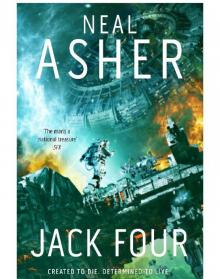 Jack Four
Jack Four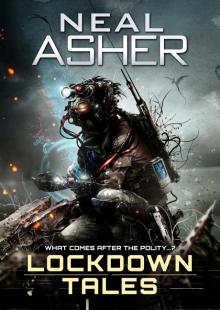 Lockdown Tales
Lockdown Tales The Warship
The Warship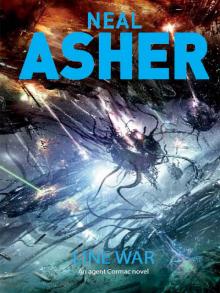 Line War
Line War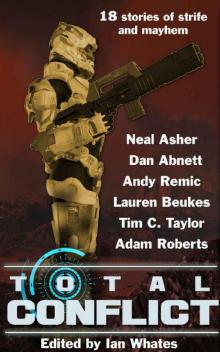 Total Conflict
Total Conflict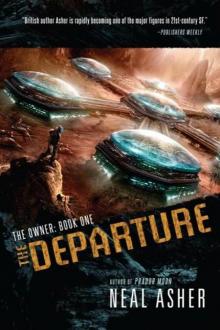 The Departure
The Departure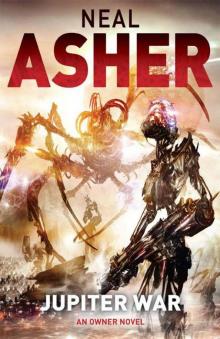 Owner 03 - Jupiter War
Owner 03 - Jupiter War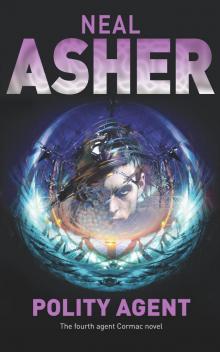 Polity Agent
Polity Agent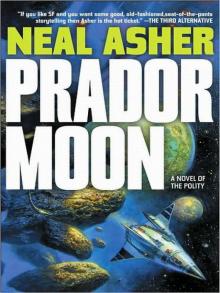 Prador Moon
Prador Moon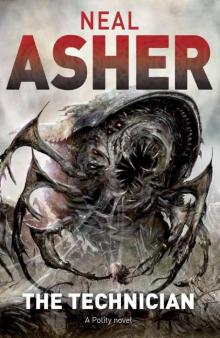 The Technician
The Technician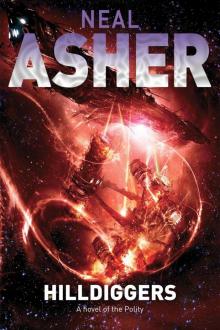 Hilldiggers
Hilldiggers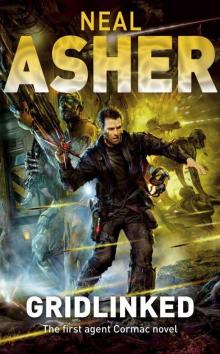 Gridlinked
Gridlinked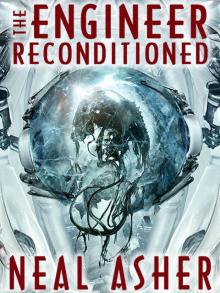 The Engineer ReConditioned
The Engineer ReConditioned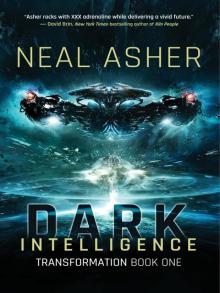 Dark Intelligence
Dark Intelligence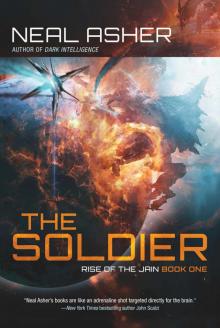 The Soldier: Rise of the Jain, Book One
The Soldier: Rise of the Jain, Book One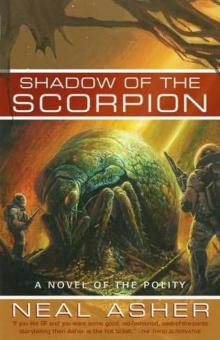 Shadow of the Scorpion p-2
Shadow of the Scorpion p-2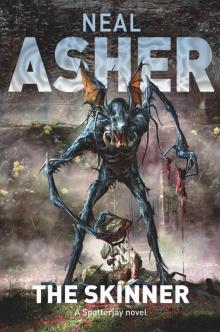 The Skinner
The Skinner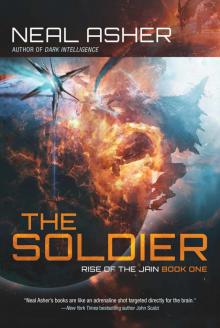 The Soldier
The Soldier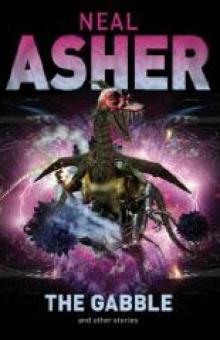 The Gabble p-13
The Gabble p-13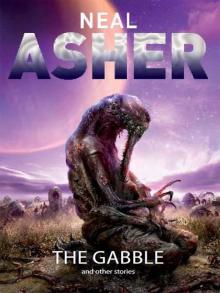 The Gabble and Other Stories
The Gabble and Other Stories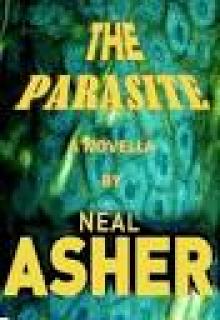 The Parasite
The Parasite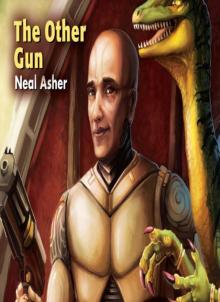 The Other Gun
The Other Gun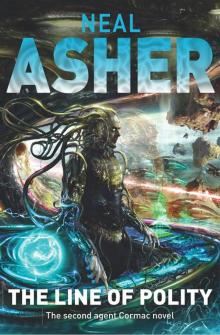 The Line of Polity
The Line of Polity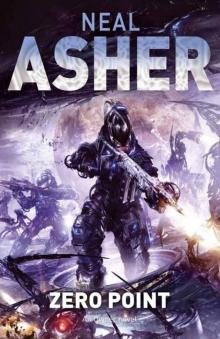 Zero Point (Owner Trilogy 2)
Zero Point (Owner Trilogy 2)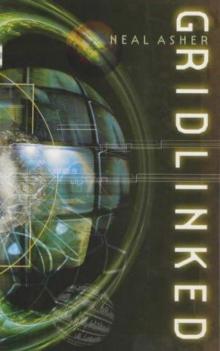 Gridlinked ac-1
Gridlinked ac-1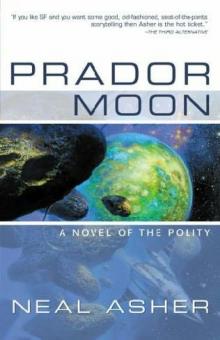 Prador Moon p-1
Prador Moon p-1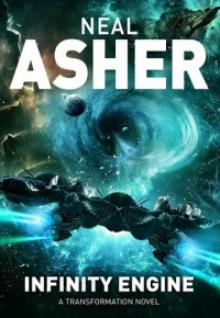 Infinity Engine
Infinity Engine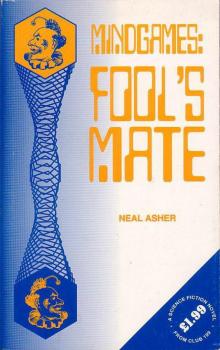 Mindgames: Fool's Mate
Mindgames: Fool's Mate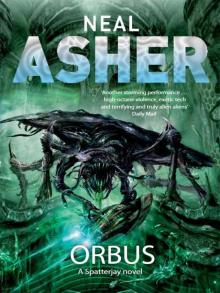 Orbus
Orbus Africa Zero
Africa Zero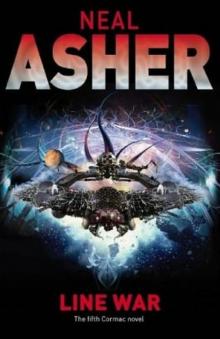 Line War ac-5
Line War ac-5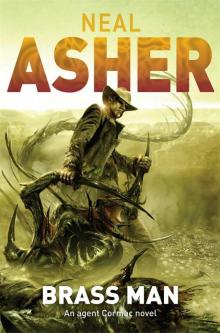 Brass Man
Brass Man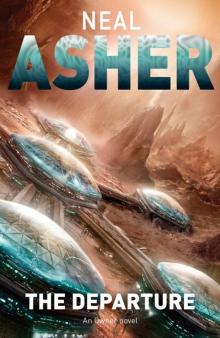 The Departure to-1
The Departure to-1 Cowl
Cowl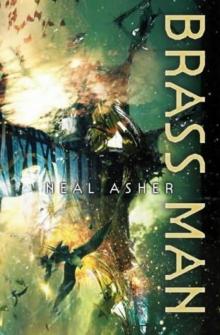 Brass Man ac-3
Brass Man ac-3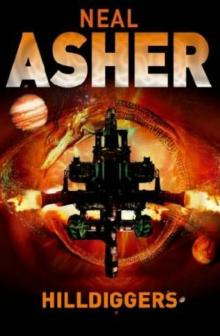 Hilldiggers (polity)
Hilldiggers (polity)![Greg Bear - [Eon Trilogy 1] - Eon (rescan) (v1.0) Read online](http://i1.bookreadfree.com/i2/04/08/greg_bear_-_eon_trilogy_1_-_eon_rescan_v1_0_preview.jpg) Greg Bear - [Eon Trilogy 1] - Eon (rescan) (v1.0)
Greg Bear - [Eon Trilogy 1] - Eon (rescan) (v1.0)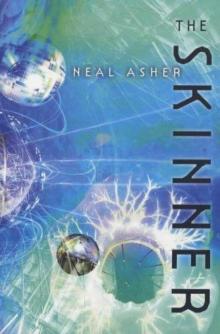 The Skinner s-1
The Skinner s-1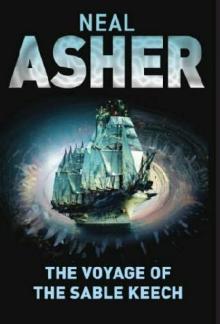 The Voyage of the Sable Keech s-2
The Voyage of the Sable Keech s-2 The Line of Polity ac-2
The Line of Polity ac-2 War Factory: Transformations Book Two
War Factory: Transformations Book Two Polity Agent ac-4
Polity Agent ac-4